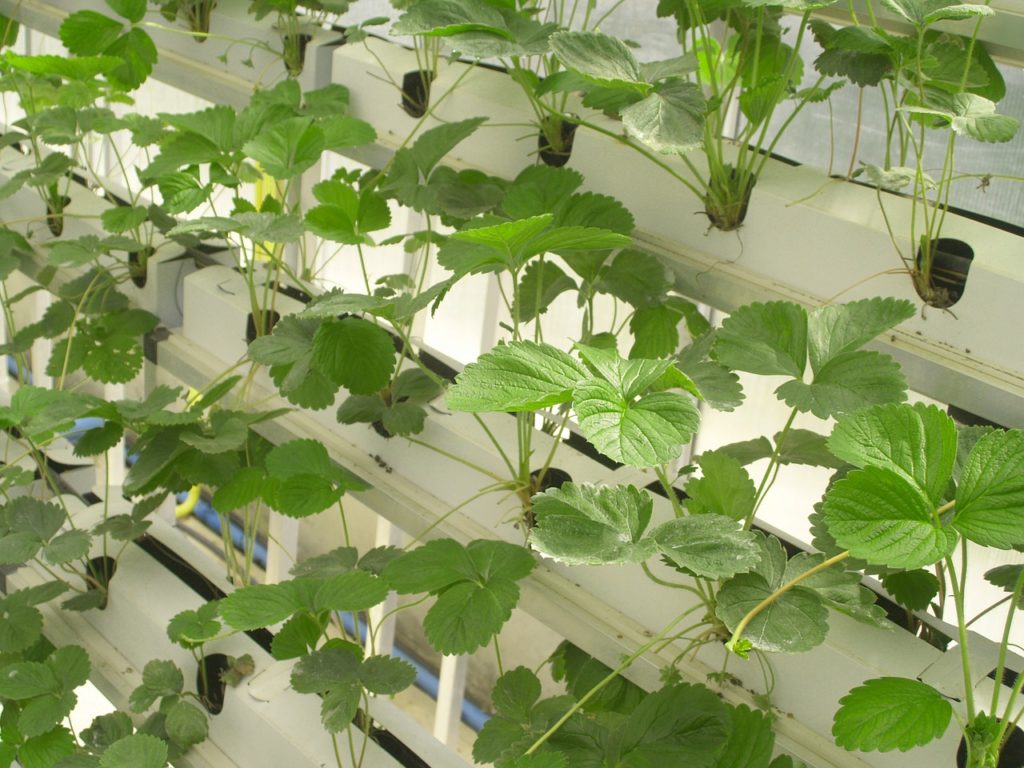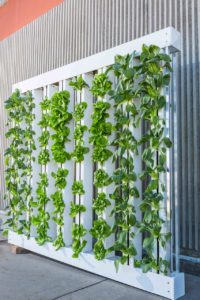Agriculture is integral to food security. A country must be able to grow crops to feed its people. However, agriculture requires arable land and water, both of which are extremely limited resources in the Middle East and North Africa (MENA).
Because of this, much of the food in the MENA region is imported. Saudi Arabia, for example, imports more than 90 percent of the fresh produce consumed by its population. This practice is expensive and unsustainable, so many companies are focusing their efforts on new, innovative methods for farming locally. One such method is hydroponics.
What is hydroponics?
Hydroponics is a farming technique that replaces soil with water. The word comes from the Greek words “hydro,” which means “water,” and “ponos,” which means “labor.”
There are a number of different styles of hydroponic farming. Sometimes the plant’s roots are directly submerged in the water, while other hydroponic farms may root the plants in a porous medium like pumice or perlite. Hydroponic farms are typically constructed in greenhouses.

Benefits of hydroponic farming
Hydroponic farming offers a variety of benefits. Not only does it eliminate the demand for arable land, but it also achieves a higher crop yield more quickly and with less labor. In traditional farming, plants expend much of their energy growing a root system in the soil to seek out water and nutrition. When those resources are provided directly to the plant in nutrient-rich water, it doesn’t need to expand its root system and can instead use that energy to grow more fruits and vegetables.
Hydroponic farming is also more water-efficient because the plant is essentially in charge of watering itself, so it only uses exactly the amount of water it needs. No water runs off, and barely any is lost to evaporation because hydroponics farms are constructed in controlled, indoor environments. Hydroponic farming also reduces the need for pesticides, as soil-borne pests are not a concern without the presence of soil.
Use of hydroponics in MENA
A number of countries in the MENA region have started to invest in hydroponic farming due to their scarcity of water and arable land.
UAE
Emirates Hydroponics Farm (EHF), established in 2005, is positioned between Dubai and Abu Dhabi. EHF sells its crops—mainly lettuce and herbs—to wholesalers and supermarkets in these major cities.
EHF has a greenhouse that spans nearly 11,000 square feet and stands about 30 feet tall. The enclosed environment allows the farmers to control the humidity, temperature, and even the carbon dioxide levels that the plants are exposed to.
Bahrain
Some reports estimate that less than a quarter of Bahrain’s land is suitable for farming, which makes hydroponic farms an especially attractive option there.
Peninsula Farms, one of the country’s largest commercial producers using hydroponics, is located on a 74-acre plot in the middle of Bahrain’s southern desert. The farm’s nine greenhouses have a daily production of about 1,000 packages of lettuce and twice as many packs of tomatoes. Peninsula Farms has a remarkable yearly crop yield of 98 percent.
Peninsula Farms is also experimenting with aeroponics, a farming method that uses no soil or water—only air and a nutrient-rich spray.
Jordan
 Jordan’s arable land resources are also minute: some experts estimate that less than 10 percent of the country’s land is suitable for farming. Jordan is also one of the top four driest countries on the planet.
Jordan’s arable land resources are also minute: some experts estimate that less than 10 percent of the country’s land is suitable for farming. Jordan is also one of the top four driest countries on the planet.
Grain farming has historically been a large market for Jordan. Four decades ago, the country was producing more than 300,000 tons of grain every year. Now, Jordan produces about one-fifth of that amount and has to import most of its grain. Climate change is also making the country hotter and drier—average local temperatures in Jordan have increased by up to 2 degrees Celsius over the past 25 years. There has also been a significant decrease in rainfall.
To find new farming techniques to meet these challenges, USAID recently funded the construction of a 3,200-square-foot hydroponics greenhouse in Zarqa. It will generate about 29,000 lettuce plants every year and use 80 percent less water than a traditional farm.
Saudi Arabia
In 2014, Pegasus Agritech, the largest hydroponic farming company in the region, reported plans to build the first commercial hydroponic farm in Saudi Arabia. The 215,000-square-foot facility will generate 1,400 tons of produce for every hectare of space. The farm will produce crops like thyme, arugula, lettuce, tomatoes, and basil.
Egypt
Egypt is also reaping the many benefits of hydroponic farming. Egyptian Hydrofarms, one of the first farming operations in the country to use hydroponics, generates a dozen different kinds of lettuce. The facility, which employs 20 people, can produce up to a thousand heads of lettuce in just two months.
Egyptian Hydrofarms delivers to a variety of stores in Cairo, Alexandria, and a few other cities, and the company also designs and builds small hydroponic farms for other entities.
The major drawback of hydroponics
One of the primary drawbacks of using a hydroponic farming system is the startup costs. While costs are considerably lower in terms of operating a hydroponic farm, it can be expensive to obtain the materials and equipment needed to set up a hydroponic system. This is one potential reason that hydroponic farming hasn’t become a more universally popular solution throughout the MENA region.

